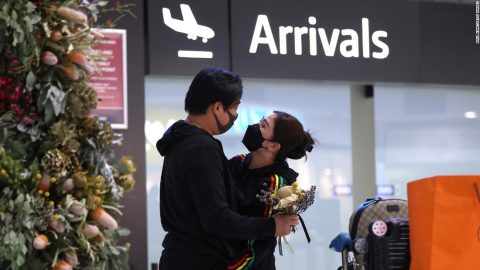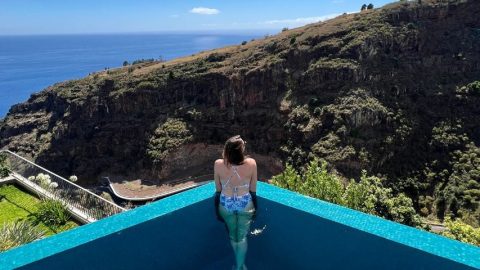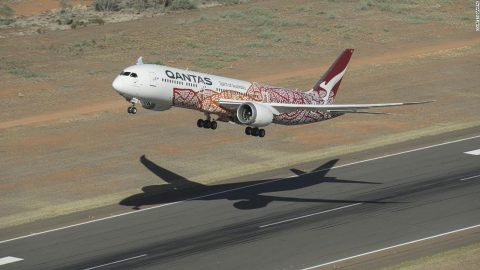(CNN) — It may feel like 2025 is a long way away, but for airlines’ luxurious new business class seats — which can take years to design and install — it’s right around the corner.
So what will business class look like in 2025? What new and exciting innovations are in store for passengers up front?
It all revolves around the Covid-19 pandemic, how airlines respond, how the recovery goes over the next year, and how many airlines want to take the plunge into creating a new seat.
It usually takes around two to three years to create a new business class seat, from the point at which it’s conceived until the first passenger sits on it.
“Generally speaking, a business class seat can be designed from scratch and brought to market in around 24-36 months,” explains Anthony Harcup, senior director at Teague, an industrial design firm that works closely with airlines and airplane manufacturers.
Crucial questions

Business class seats typically take at least two years from design to market.
Teague
Timing will depend on a number of factors.
For example, is this an existing seat that another airline has used before, or something entirely custom for an airline?
Has the seat been installed on this kind of airplane before, or does the seatmaker need to re-size it — down from the version used on a big Boeing 777 to a medium-sized Airbus A330, or vice versa?
How many different kinds of airplane will it fly on, since each one needs a re-sized variant of the seat?
Will it be installed at the factory (which takes longer to agree with Boeing or Airbus), installed onto existing planes, or both?
How much of the older fleet will be refurbished versus retired?
And when the time comes to refurbish older planes, will this take place at the same time as a major maintenance overhaul, or will the plane be specially taken out of service to swap out the seats?
Those last questions are key, because if an airline takes too long to roll out its new seats, they’ll be eclipsed by the competition.
United Airlines announced its Polaris seats back in June 2016 and still, more than five years later, hasn’t completed its rollout — and, indeed, hasn’t even started on some of its planes.
In the meantime, business class mini-suites with doors like the Qatar Airways Qsuite, Delta ONE Suite and JetBlue’s Mint Suite are now the kind of product business class travelers expect, whether they’re on a big Boeing 777 or a smaller Airbus A321neo family airplane on a long-haul trip.
Rise of the single aisle

JPA Design is working on a new seat called AIRTEK.
JPA Product Design Ltd.
“In the last five years,” explains Harcup, “travel preferences, technological developments and geopolitical shifts have forced a major drop in demand for widebodies in favor of more versatile, fuel-efficient long-range narrow-body aircraft.”
That trend has been amplified by the retirement of older airplanes, such as the iconic Boeing 747, during the Covid-19 pandemic.
As a result, “airlines have begun to equip their single-aisle aircraft with premium lay-flat seats so that they can service mid- and long=haul routes with similar levels of comfort to widebody and this trend is on the up,” Harcup says.
“If this continues, the future market for business class travel — or at least a large segment of it — will be on single-aisle aircraft.”
So the big news is small airplanes, especially the single-aisle narrowbody Airbus A321XLR — XLR for “extra long range,” and capable of flying up to 10 hours — and the seats on these planes will look quite different to previous business classes for many airlines.
“In the next few years we will see many new-to-market, purpos-designed single-aisle seats launched,” Harcup says. “They have been in development with all the major seat suppliers for a number of years and are now being selected for development by many of the major airlines.”
Cutting carbon

Environmental concerns are now starting to dictate design.
JPA Product Design Ltd.
JPA Design is one of the big names in seating, having invented several of the most popular seats on the market.
Its business development director, Richard D’Cruze, explains that, for the seats of the future, “It’s also now not enough to talk about the standard product attributes of comfort, privacy and luxury; sustainability has to figure in the story so there will be a push by airlines and suppliers to improve the environmental credentials of their business class seats.
“A few examples would be via more ethically sourced trim and finish materials or light weighting to reduce fuel burn and the resulting carbon emissions.”
JPA is working on a new seat called AIRTEK in conjunction with Williams Advanced Engineering — from the motorsports house Williams — and SWS Certification.
“This project takes the standard business class reverse herringbone seat layout, invented by JPA Design, and updates it to incorporate advanced motorsport technology,” D’Cruze says, promising weight reduction from carbon fiber and composite materials leading to lower fuel burn and thus carbon emissions.
“The original version was targeted at widebody twin-aisle fleets. However, following discussions with airlines and seat vendors, we have also developed a version for narrowbody single-aisle fleets to meet the growing demand for a lie-flat business class product on extra long range aircraft like the A321XLR.”
It may seem counterintuitive, but single-aisle narrowbodies have a lot more space for business class seats than twin-aisle widebodies, proportionally. It’s the equivalent of three economy seats on either side of the aisle, compared with something like two-thirds of that space per business seat on a widebody.
That means that new seats are on the way.
“The commercial landscape is shifting and is giving rise to a whole new generation of products,” Harcup says. “What we are seeing now is a snapshot of a moment in time — business class is changing shape. I’m excited to see how it will evolve and where it will settle.”




Recent Comments